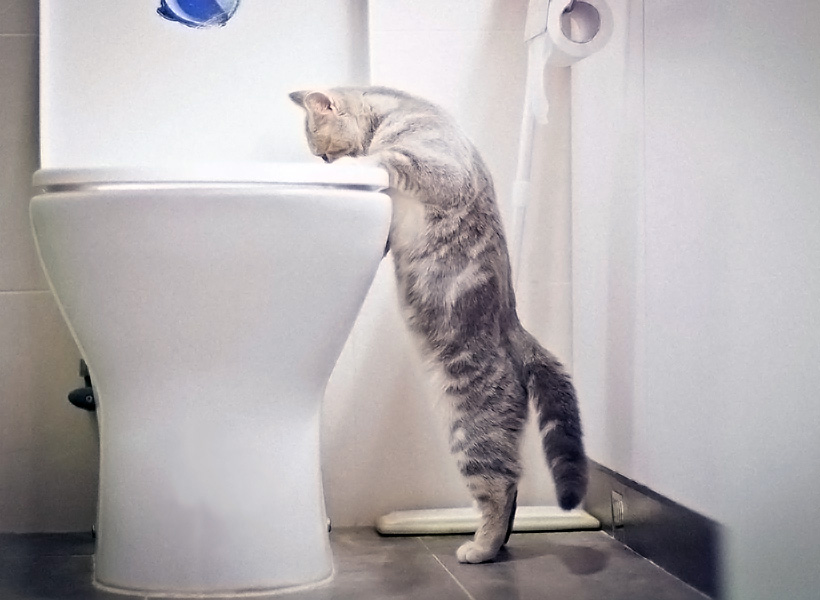The Risks of Flushing Cat Poop in Your Toilet - Precautionary Measures
The Risks of Flushing Cat Poop in Your Toilet - Precautionary Measures
Blog Article
What are your thoughts on How to Dispose of Cat Poop and Litter Without Plastic Bags?

Intro
As pet cat owners, it's essential to bear in mind just how we get rid of our feline pals' waste. While it may appear hassle-free to flush cat poop down the toilet, this practice can have damaging effects for both the setting and human health and wellness.
Ecological Impact
Purging feline poop presents damaging microorganisms and bloodsuckers right into the water system, posturing a substantial threat to aquatic ecosystems. These impurities can negatively influence aquatic life and compromise water high quality.
Health and wellness Risks
Along with ecological concerns, flushing cat waste can additionally position wellness dangers to humans. Feline feces might contain Toxoplasma gondii, a parasite that can create toxoplasmosis-- a potentially serious health problem, especially for expectant women and individuals with weakened body immune systems.
Alternatives to Flushing
Fortunately, there are safer and extra liable means to dispose of pet cat poop. Take into consideration the complying with alternatives:
1. Scoop and Dispose in Trash
One of the most typical approach of taking care of feline poop is to scoop it into a naturally degradable bag and toss it in the trash. Make certain to make use of a specialized litter scoop and take care of the waste quickly.
2. Usage Biodegradable Litter
Opt for naturally degradable feline clutter made from products such as corn or wheat. These clutters are eco-friendly and can be safely thrown away in the garbage.
3. Hide in the Yard
If you have a yard, think about burying cat waste in an assigned location far from veggie gardens and water sources. Make sure to dig deep adequate to stop contamination of groundwater.
4. Install a Pet Waste Disposal System
Buy an animal garbage disposal system specifically created for feline waste. These systems use enzymes to break down the waste, minimizing odor and ecological influence.
Conclusion
Responsible pet dog possession expands past giving food and sanctuary-- it also entails appropriate waste monitoring. By refraining from purging pet cat poop down the toilet and going with alternative disposal techniques, we can minimize our environmental footprint and secure human wellness.
Why Can’t I Flush Cat Poop?
It Spreads a Parasite
Cats are frequently infected with a parasite called toxoplasma gondii. The parasite causes an infection called toxoplasmosis. It is usually harmless to cats. The parasite only uses cat poop as a host for its eggs. Otherwise, the cat’s immune system usually keeps the infection at low enough levels to maintain its own health. But it does not stop the develop of eggs. These eggs are tiny and surprisingly tough. They may survive for a year before they begin to grow. But that’s the problem.
Our wastewater system is not designed to deal with toxoplasmosis eggs. Instead, most eggs will flush from your toilet into sewers and wastewater management plants. After the sewage is treated for many other harmful things in it, it is typically released into local rivers, lakes, or oceans. Here, the toxoplasmosis eggs can find new hosts, including starfish, crabs, otters, and many other wildlife. For many, this is a significant risk to their health. Toxoplasmosis can also end up infecting water sources that are important for agriculture, which means our deer, pigs, and sheep can get infected too.
Is There Risk to Humans?
There can be a risk to human life from flushing cat poop down the toilet. If you do so, the parasites from your cat’s poop can end up in shellfish, game animals, or livestock. If this meat is then served raw or undercooked, the people who eat it can get sick.
In fact, according to the CDC, 40 million people in the United States are infected with toxoplasma gondii. They get it from exposure to infected seafood, or from some kind of cat poop contamination, like drinking from a stream that is contaminated or touching anything that has come into contact with cat poop. That includes just cleaning a cat litter box.
Most people who get infected with these parasites will not develop any symptoms. However, for pregnant women or for those with compromised immune systems, the parasite can cause severe health problems.
How to Handle Cat Poop
The best way to handle cat poop is actually to clean the box more often. The eggs that the parasite sheds will not become active until one to five days after the cat poops. That means that if you clean daily, you’re much less likely to come into direct contact with infectious eggs.
That said, always dispose of cat poop in the garbage and not down the toilet. Wash your hands before and after you clean the litter box, and bring the bag of poop right outside to your garbage bins.
https://trenchlesssolutionsusa.com/why-cant-i-flush-cat-poop/

I am just very fascinated by Don’t flush cat feces down the toilet and I hope you enjoyed reading the blog post. If you liked our blog post plz remember to share it. Thanks for taking the time to read it.
Click Here Report this page